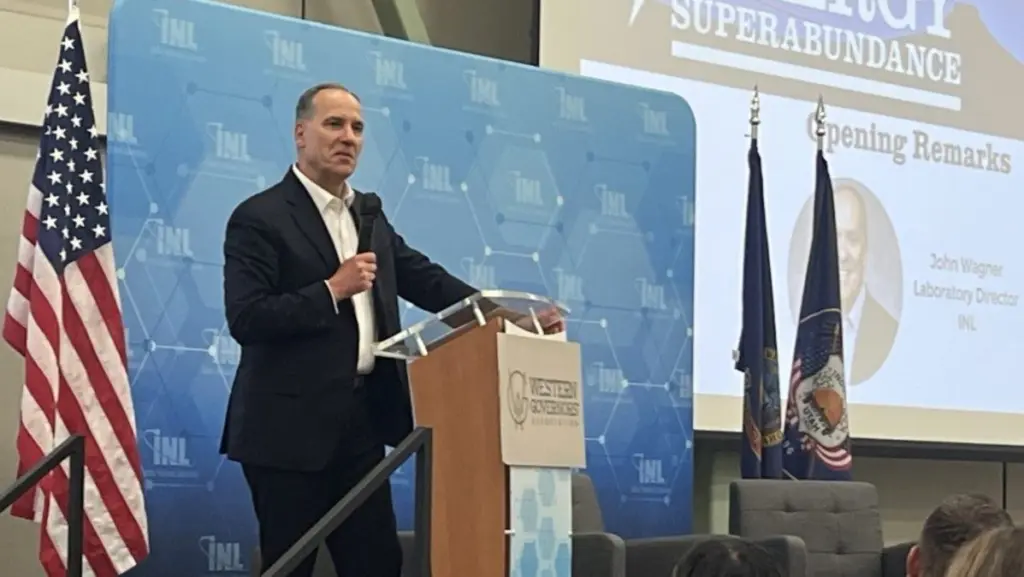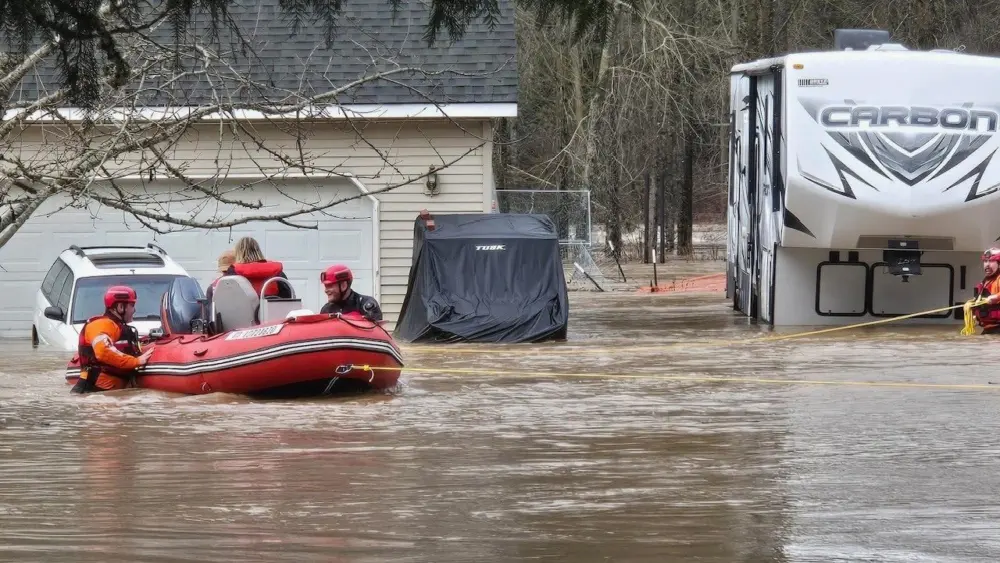IDAHO FALLS, ID – If Idaho is going to lead a nuclear renaissance in America, Idaho legislators and other policy makers must focus on workforce development, training and educational opportunities, Idaho National Laboratory Director John Wagner said.
Wagner emphasized the importance of workforce development and education during the Western Governors’ Association’s two-day Energy Superabundance conference held Monday and Tuesday at Idaho National Laboratory in Idaho Falls.
During the conference, Wagner told Idaho Gov. Brad Little and Utah Gov. Spencer Cox that America is in the middle of a nuclear renaissance and Idaho National Laboratory is in the process of building and permitting new nuclear reactors for the first time in 50 years to help meet the country’s increasing energy demands.
To tackle the challenge and lead the renaissance, Idaho will need a robust workforce with a variety of skills, Wagner said.
“When you think about your path, fast forward, and we’re building out many reactors in the West and beyond. It’s not just about nuclear engineers anymore,” Wagner said in an interview with the Idaho Capital Sun. “It’s about welders. It’s about all the different crafts. It’s about nuclear operators.”
SUB: Idaho National Laboratory director says Launch program can help state’s workforce pipeline
Wagner said Little’s Idaho Launch program, which provides up to $8,000 for Idaho students to receive career-technical training or enroll in eligible higher education programs tied to in-demand careers, is an excellent program that he supports.
“Making that easier to get first-generation college graduates into the pipeline is fantastic,” Wagner told the Sun. “I myself am a first generation college graduate, so l love that. That’s a great example of what can be done.”
Little has continuously championed the Idaho Launch program, but funding has come under fire over the past two years by conservative Republican legislators looking to reduce state spending.
Wagner also said new workforce training initiatives need to be launched. He suggested Idaho legislators could look to the Navy Nuclear Power School for ideas and best practices to replicate in Idaho. The Navy Nuclear Power School is a technical training program that helps train enlisted students and officers in math, physics and other disciplines to prepare students to work in nuclear power for the Navy.
When you think about your path, fast forward, and we’re building out many reactors in the West and beyond. It’s not just about nuclear engineers anymore. It’s about welders. It’s about all the different crafts. It’s about nuclear operators.
– John Wagner, Idaho National Laboratory director
Wagner did not have a specific proposal to put forward, but suggested Idaho elected officials could leverage the state’s existing higher education institutions like the College of Eastern Idaho, Idaho State University, Boise State University, University of Idaho and more to develop a workforce training program to prepare students to work at Idaho National Laboratory or in the nuclear industry.
Wagner said he has met with leaders in Utah and Idaho about creating the equivalent of a nuclear power school located in the West.
“How do you leverage what’s there, adjust the curriculum, and provide that sort of package?” Wagner said. “I would love to see us do something like that.”
Nuclear Regulatory Commission Commissioner Bradley Crowell also emphasized the importance of developing a competent and reliable workforce when he spoke Monday during the Energy Superabundance conference at INL.
“My biggest concern I shared with (Govs. Little and Cox): the highest hurdle to success, going forward, is workforce,” Crowell said Monday. “That’s workforce both for trade and scientists and engineers, et cetera. In the private sector, there’s not enough there – they are hiring actively. And on the government side, in the (Nuclear Regulatory Commission) we have serious current workforce shortcomings that are going to be exacerbated going forward.”
As one of the state’s largest employers, Idaho National Laboratory will continue to need a robust and skilled workforce, Wagner said.
The INL has experienced significant growth in the past seven years, Wagner said. It increased its workforce from about 4,000 employees roughly seven years ago to about 6,000 employees today.
Over the past couple of years, the Idaho National Laboratory has hired between 700 and 1,000 people a year, Wagner said. Although he does not see that level of growth continuing now that he views INL’s staff as “right-sized,” Wagner said the lab will need to continue to hire staff due to attrition, retirement and the need for specialized skills and positions.
“Which is still significant when you’re talking about 6,000 people,” Wagner said. “So we will continue to have those needs.”
Wagner said Idaho National Laboratory employees have not been subject to workforce reductions, early retirement buyouts and deferred resignations that have affected the federal government this year, because INL employees are not federal employees. The U.S. Department of Energy owns the laboratory, but it hires a contractor, Battelle Energy Alliance, to operate and manage the lab. Instead of being federal employees, the Idaho National Laboratory’s workforce are Battelle Energy Alliance employees.
The Energy Superabundance conference wrapped up Tuesday.
On Monday, Little and Cox spoke about the significant increase in projected energy demand, which is fueled in part by the growth of AI data centers and large commercial/industrial projects. On Monday, Little created a new Idaho Advanced Nuclear Energy Task Force, which he says replaces and modernizes the Idaho Leadership in Nuclear Energy Commission, or LINE Commission, that his predecessor, former Idaho Gov. Butch Otter, created.
This story first appeared on Idaho Capital Sun.





